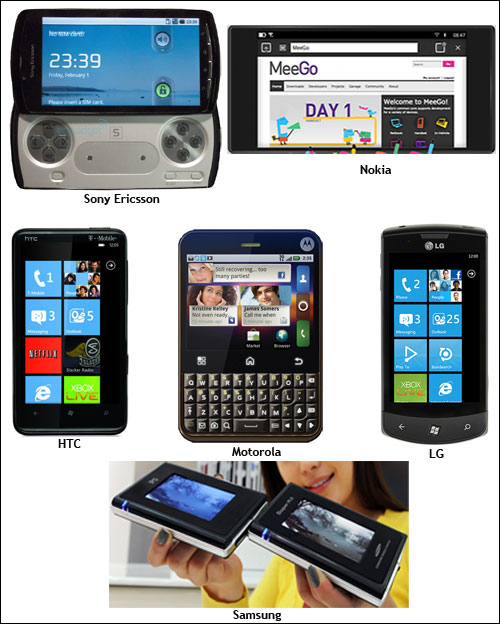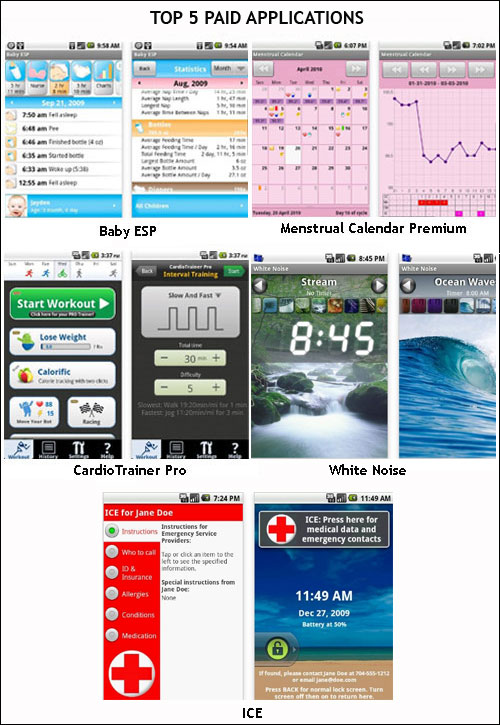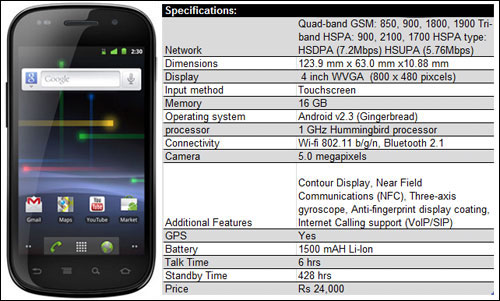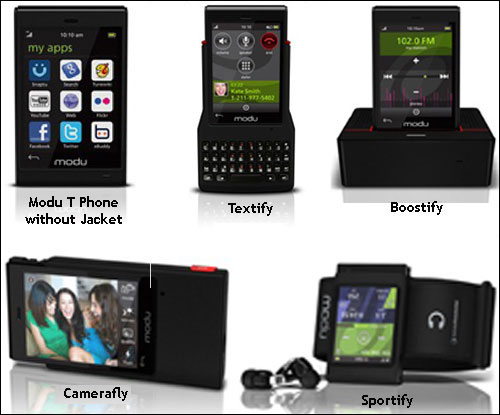Jabra, a well-known name in Bluetooth headset market, has launched a new Bluetooth headset that is designed specially for first-time users.
The headset is called Easygo and features large icons, an on-off button slider, and a voice guidance feature that communicates battery level and connectivity status.
Easygo can be connected to two Bluetooth devices simultaneously, which is particularly useful for people who carry two phones around.
The device uses Bluetooth 2.1 version, which apparently aids simple and secure pairing, and improved voice clarity. Jabra claims that the headset will support up to six hours of Talk time and up to eight days on standby mode.
Since the headset is only for one ear, it can’t be used to listen to songs. Jabra Easygo has DSP technology for crystal clear sound and an automatic volume control that keeps sound constant even when one moves in and out of quiet and noisy environments.
Jabra Easygo is currently available at a price of approximately Rs 2,100 which means that it is not an inexpensive Bluetooth headset; Jabra itself has cheaper options. However, the new features do make it an interesting option to consider.
Jabra launches affordable Bluetooth headset in India
Ten mobile phones expected at MWC
Held every February in Barcelona, Spain, Mobile World Congress (MWC) is for mobile phones what Auto Expo is for cars in India. The event is organised by GSMA, which is the international governing body for GSM based mobile technology. All mobile phone companies use this platform to showcase their latest technologies. Here is a sneak peak at what the mobile majors are coming up with at MWC 2011.
Nokia
The company is making a comeback at Mobile World Congress 2011. It is expected to unveil its first MeeGo (Nokia’s open source OS project) product. It is also expected to upgrade the user interface of its Symbian devices with a new portrait-orientation Qwerty keyboard and split screen text input.
Sony Ericsson
Sony Ericsson’s PlayStation phone is expected to be the next big thing in gaming, and it is coming to the Mobile World Congress. The phone is a combination of the PlayStation gaming console and a mobile, and is awaited with much anticipation.
Samsung
Samsung will use the MWC platform to unveil phones based on the new plane to line switching display technology. PLS enables various viewing angles, greater brightness and a crisper picture. Samsung is looking at introducing a device with a 4.5 inch screen, using this technology which is cheaper and is therefore expected to drive prices down.
HTC
HTC is likely to launch its first 3D Android phone at the Mobile World Congress 2011. It had already showcased a 3D phone this year but that was merely a demonstration piece. HTC plans to be the first to come up with a 3D Android phone; while Motorola, Acer and Sharp also have plans to launch 3D smartphones at the upcoming event.
Motorola
Motorola will launch its Olympus phone powered by Nvidia Tegra 2 processors in Barcelona. The phone is expected to feature a 4 inch touchscreen, HDMI out port and Android 2.3 OS. Being powered by a dual Core Tegra 2 processor, Motorola’s Olympus is expected to be a real smooth operator. The device will sport the latest Motorola user interface for social networking called Moto Blur.
LG
LG is expected to make a comeback at the Mobile World Congress 2011. The Korean company’s plans are not yet clear, but it has already said it will bring out a series of Optimus smartphones including one that is based on the Windows Phone 7 platform. Also on the cards is an LG tablet device. Asus
Asus
Last year the company showcased products with its joint venture partner Garmin. Now since the two companies have split, it will be interesting to see Asus and Garmin’s new product line up. >From Asus we can expect new tablets and a smartphone with a 5 inch screen.
Acer
Acer will most likely showcase two tablet devices running on Android 3.0 Honeycomb. These will include a 7 inch version with 1.2 GHz dual Core Qualcomm Snapdragon processor, and a 10 inch screen powered by a dual Core 1 GHz Nvidia Tegra 2 processor. It will also showcase a new line of smartphones including one that will be an Android device with a 4.8 inch touchscreen. Acer recently demonstrated prototypes of the ICONIA tablets and notebooks, which were concept devices, and we hope to see the finished product at the Mobile World Congress.
HP
HP will demonstrate a lot of smartphones based on Palm’s OS. It will also showcase a new webOS. The company is promising a new level of software personalisation and is working with developers to make this happen.
Microsoft
Windows Phone 7 will likely be the big thing at the Mobile World Congress. It is expected that Microsoft will launch several phones using this OS with partners such as HTC, Asus, Samsung, Dell and LG. However, it is still unclear whether Microsoft will launch a phone of its own.
Too many Android updates
Was Steve Jobs right about Android?
When Steve Jobs said that Google’s Android platform was way too fragmented, Google said the statement was meant purely to frighten junior developers and, to a great extent, potential customers as well. It seems, though, that Steve Jobs might have been right. The main problem with Android is that there have been six releases within a short span of 19 months and that’s too many revisions for developers as well as customers.
The journey of Android Android Inc was a small startup based in Palo Alto, California, way back in 2005, when it was bought by Google. Its founder Andy Rubin, and his team, began work on a Linux based operating system for mobile devices targeted at handset manufacturers and carriers. At the end of 2007, several major companies including Google, Intel, Qualcomm, Sprint Nextel, HTC, Motorola, T-Mobile, and Nvidia came together in a group which was called the Open Handset Alliance.
Android Inc was a small startup based in Palo Alto, California, way back in 2005, when it was bought by Google. Its founder Andy Rubin, and his team, began work on a Linux based operating system for mobile devices targeted at handset manufacturers and carriers. At the end of 2007, several major companies including Google, Intel, Qualcomm, Sprint Nextel, HTC, Motorola, T-Mobile, and Nvidia came together in a group which was called the Open Handset Alliance.
Since 2008, Android has been available as open source software and various private companies are allowed to add their own apps to it and sell them as well (surprisingly, they are not required to submit the new product back to the open source community).
At the Mobile World Conference 2008, there were three handsets running Android apps in one form or other. The first major device with a touchscreen and a Qualcomm processor was unveiled at the Google IO conference. People now know this device as T-Mobile G1.
The Android update timeline
Users have seen numerous updates to the Android platform since its inception. Version 1.5, also called Cupcake, had several new features and user interface updates. Using Cupcake, people could record and play video, and directly upload their pictures to Picasa and videos to YouTube. A soft keyboard was also added to it, with text prediction capabilities.
After Cupcake came Android 1.6, or Donut. It delivered an improved Android Market experience and a much better unified interface for camera, gallery and camcorder. In the gallery, users could select multiple photos to delete. The voice search facility was updated, so users could get faster response and better integration with native apps. There was also support for CDMA/EVDO, VPNs, and text to speech conversion. The maximum resolution it could deliver was WVGA.
The third version of Android was 2.0 or 2.1, also known as Eclair. In this version hardware speed was optimised, and it could support higher resolutions and screen sizes. The browser’s user interface was new and so was support for HTML5. The camera had built in support for Flash and Microsoft Exchange.
The Android 2.2 Froyo update had its performance, memory and OS speed optimised. Also its Chrome browser application as well as Microsoft Exchange and App launcher were improved.
Gingerbread, the latest edition of Android, or version 2.3, supports internet telephony, video calls, video playback, near field communication (NFC) and copy paste functionality.
Other versions in the pipeline are Honeycomb and Ice Cream.
Android 2.1: The dominant platform
About half the Android phones in circulation are Android 1.5 or 1.6, which means it (fragmentation) has already started to gain pace. The six major releases within 19 months are confusing for average consumers. Sooner rather than later, compatibility issues (especially for app developers) will increase.
Google itself admits its product cycle has become stable now and says that updates are likely to come twice a year, and that they are likely to boil down to once a year later on. Although fragmentation will remain an issue with Google, careful management of newer versions may prevent earlier versions of Android from going obsolete right away. This will give many users something to be happy about, but we are not sure about the geeks.
India has only 483 million mobile subscribers
TRAI has been under pressure from various operators, stakeholders and market analysts to ask all telecom service providers to report their active subscriber numbers. Concerns were raised that the actual number of subscribers are much lower than reported.
Latest data released by TRAI has proven the apprehensions of stakeholders to be true. This data reveals that there are only 483 million active subscribers in India. Contrast this figure to the reported 723 million total mobile users in the country.
We, however, feel that even this number does not reflect the true figure and that the actual number of active subscribers is much lower.
The reason for our skepticism is that for one, TRAI considers those subscribers active who have used their mobiles at least once during a month after activating a connection, while research has proven that many pre paid subscribers buy a connection and abandon it within days.
Moreover, current subscriber data comes at a time when only 70 per cent of mobile subscribers’ locations, usage patterns and similar details are available. This data is collectively called the visitor location register or VLR. The remaining 30 per cent of users have all been considered active by TRAI. Instead, the Regulator could at least have extrapolated results regarding those subscribers about whom it did not have data, based on the results that it did have, rather than assuming something that cannot be true.
We earlier published a story pegging the total active user base at only 304 million and it seems our estimate was pretty close.
Top health applications on Android
In most developing countries, mobile health (m-health) applications are being developed to target rural mobile phone users who do not have access to medical services.
In developed countries, however, people use mobile health applications for much more than just medical treatment. They use apps when they’re expecting a baby, or to keep track of appointments with the doctor, and to maintain medical records or count the calories they’re consuming.
Android, one of the most popular mobile operating systems, also offers an array of m-health applications that it regularly updates.
Here we have listed the top five free and paid m-health applications available on Android Market.
Top five free applications:Instant Heart Rate –This application can measure heart rates using the phone’s built-in camera. A user needs to place his finger gently over the camera and hold it steady for at least ten seconds for the application to display his heart rate on the phone’s screen.
Calorie Counter by FatSecret – The tool helps users to get calorie and nutrition facts for the foods they eat, and enables them to maintain a food diary.
Calorie Counter by MyFitnessPal – This application is similar to the calorie counter by FatSecret. It has a database of over 590,000 foods of different types, and helps users to keep a count of calories.
Animated Sex Positions – This App for adults comes with over 72 sex positions from the Kamasutra.
JEFIT – Designed by bodybuilders, JEFIT is a workout planner with hundreds of exercises. It helps users to maintain workout logs, synchonise workout progress with a personal computer, use charts for tracking workouts etc. The application also has features such as customisation of workout routines and two-way synchronisation.
Top five paid applications:
Baby ESP – Developed by Hewitt Software, the app can be used to track when a baby eats, sleeps etc. Users can maintain charts about their babies’ daily activities and can set reminders as well. Baby ESP also enables synchronisation of multiple devices. The application can be tried free of cost for 7 days and subsequently costs Rs 179.
Menstrual Calendar Premium – This application can be used to track periods and body temperature. It comes with a customisable calendar with icons, customisable symptoms, ovulation, cycle report, basal body temperature chart (to record the lowest temperature attained by a body at rest/sleep,) and forecasts the next menstruation and ovulation. Menstrual Calendar Premium costs Rs 173.
White Noise – Developed by TMSOFT, which makes mobile applications for the iTunes app Store, Android Market, BlackBerry AppWorld and Windows Marketplace. White Noise features 40 ambient sounds to help the user relax or sleep. It comes with an audio background service, sound shutoff timer, multiple alarms, sound controls, and high quality sounds such as ocean waves, rain storms, running stream etc. White Noise is priced at Rs 89.
CardioTrainer Pro – This application allows users to track their exercises with GPS and a calculator etc. It offers voice training for weight loss and advanced interval training at 20 levels. The application comes with a 30-day money back guarantee and has been developed by WorkSmart Labs Inc. It costs Rs 449.
ICE (In case of emergency) – ICE provides information for paramedics or hospital staff to use in case a mobile phone user has an accident. It keeps a database of the names of people to call during emergency, insurance information, doctor’s name and number, allergies, medical conditions, medications and special instructions. It is available for Rs 180.
Control your car with your smartphone
Mavizon Technologies, a Indianabased USA based startup, has introduced a new smartphone application Autobot, which lets users to control their cars in several ways using their phones. This application also helps people track the location of the car, a useful feature in finding a stolen car or one that is lost in the maze of vehicles at a parking lot.
Security and tracking services
Using this application, people can lock their car remotely as long as they and their cars are in the mobile connectivity zone. The commonly used remote lock for cars only works when the remote is within a few metres from the vehicle or in the line of sight.
Not just that, this feature of the application also helps people to track where their teenager has taken the car. Being a GPS enabled device, it will tell users the way to the closest petrol pump or hotel as well.
Connectivity
The best part of the application is its ability to connect to most modern cars produced in last 10 years or so. It also works on all smartphones.
All that users have to do is to connect a dongle (a small device) supplied with the application to the diagnostics port of their car (located on the engine control unit of the car). There’s no need to visit the mechanic to install the device.
Reminder service
Being connected to the car’s diagnostics port, this device is capable of telling users what is wrong with their car, when it is running low on brake fluid or engine oil and when it needs servicing.
Price and availability
This application from Mavizon Technologies is expected to be available some time early next year with a price tag of less than $300 (Rs 13,500) and there will be no monthly fee after that, provided the user agrees to receive promotional offers.
The bad news is that it is not coming to India immediately. However, once launched in USA, it’s bound to find its way into India in substantial numbers. It is too cool to resist.
Mobile use in schools
It is now official. Indian school children use the mobile phone far more than they are formally allowed to. If that surprises no one, some of the facts from the research carried out by ASSOCHAM (The Associated Chambers of Commerce and Industry in India)are nevertheless interesting.
For instance, the mobile carrying phenomenon begins earlier than is generally assumed. By 12 years, one in two school students is carrying a mobile; by the age of 14, three of four children have them; and by 18 years, nine of ten have a phone on them.
ASSOCHAM’s secretary general, DS Rawat, points out that in spite of schools frowning on students carrying the gizmo, more than two thirds of the teens interviewed confessed to using a phone on school premises. ASSOCHAM’s press release disapprovingly describes the children’s behaviour as bizarre instead of seeing it as a widespread social issue.
The survey says that students who use the mobile excessively are more likely to suffer from disrupted sleep, restlessness, stress and fatigue. It adds that there ‘seems to be’ a connection between heavy mobile usage and smoking, snuffing and the use of alcohol, but does not elaborate on this correlation.
The research has been carried out by ASSOCHAM’s Social Development Foundation in Mumbai, Delhi, Ahmedabad, Chandigarh, Chennai, Cochin, Dehradun, Goa, Hyderabad, Indore, Patna and Pune during September-November this year. A total of 2,000 parents and 2,500 students were interviewed.
Why do parents get mobiles for their children? The main reason is that it keeps children busy and leaves parents free to get on with their lives. Besides, parents feel that if children entertain themselves with the mobile, they are less likely to keep bad company. And, of course, more than half the parents would like their wards to keep the mobile at all times because they feel reassured that their kids are only a call away.
Apart from talking, 83 per cent of students use their phones to take pictures and 64 per cent share pictures with others. Sixty per cent listen to music on their phones and 46 per cent play mobile games. One third of the students surveyed use their mobiles to exchange videos, as also for instant messaging.
Going by gender, 69 per cent of girls text several times a day just to say hi and to chat; in comparison, only 42 per cent of boys do likewise. Most girls are clearly addicted to SMS: 56 per cent of the girls surveyed send almost 50 text messages per day.
Google eBookstore launched
Google has created another milestone with the launch of world’s largest eBook store with 3 million titles to begin with — many of them free — to any device with a web Browser in the United States.
The Google eBook store is based on an open platform. As a result one doesn’t need Android platform to read their favourite book as most of the devices are compatible with Google eBooks including smartphones.
With the new Google eBooks web browser, one can buy, store and read Google eBooks in the cloud. Which means you can access your eBooks like you would access messages in Gmail or photos in Picasa–using a free, password-protected Google account with unlimited ebooks storage.
Current collection includes the latest bestsellers like James Patterson’s Cross Fire and Jonathan Franzen’s Freedom, and the classics like Great Expectations, A Tale of Two Cities and Gulliver’s Travels.
Apart from that, Google has also launched free applications for Android and Apple devices, which will make it possible to shop and read on the go.
These applications will allow users to select which font, font size, day/night reading mode and line spacing suits according to their taste. Application will also allow you to pick up on the page where you left off when switching devices.
Currently available only in United States, these eBooks can be bought either from Google eBook store or from Google’s independent bookseller partners like Powell’s, Alibris and participating members of the American Booksellers Association.
Google e Books was first launched in 2004. Since then, it has digitized more than 15 million books from more than 35,000 publishers, more than 40 libraries, and more than 100 countries in more than 400 languages. This repository of knowledge and culture will continue to be searchable through Google Books search in the research section alongside the eBook store.
Google Nexus S on Gingerbread launched
Google had launched Nexus One in January with much fanfare but the device failed to get many takers. Now it has launched another Nexus device which is running on Android v2.3 Gingerbread.
Gingerbread is the latest Android version to be announced, first one being Android Donut followed by Eclair and Froyo. It has been in the lime light ever since Google started working on this version of Android.
The Google blog confirmed that Nexus S will be the first device to sport the Gingerbread. Unlike the first Nexus which was developed by HTC, Nexus S has been developed in coordination with Samsung.
Nexus S comes equipped with 1GHz Hummingbird processor, both back and front facing cameras, 16 GB Internal Memory and near field communication (NFC) hardware. NFC enables users to use the phone as access card, credit card etc provided service providers enable these services.
It is also the first smartphone to feature a 4 inch contour display, claims the company, and is designed to fit comfortably in the palm of your hand and along the side of your face. According to the Google blog, Gingerbread is the fastest Android version, and the other improvements include internet calling, copy/ paste functionality for text, gyroscope(Orientation) sensor support, and a new keyboard.
According to the Google blog, Gingerbread is the fastest Android version, and the other improvements include internet calling, copy/ paste functionality for text, gyroscope(Orientation) sensor support, and a new keyboard.
Users in United States will be able to buy Nexus S after December 16, both online and in store, with T mobileconnection. India launch has not been announced yet. In the States it will cost $529 (Rs 24,000).
In the earlier version of Nexus, Google had put its bet on online sales, but the experiment failed. This time around they are going with the traditional sales channel. The phone will be available in USA through the retail stores as well as bundled.
Participating in a conference, Andy Rubin, vice president, Google, said Nexus One didn’t shake up the business model because Google ended up biting more than it could handle. This time, the company is selling the phone through traditional channels, such as Best Buy and then there are locked phones as well. While answering the questions, he also flashed a new Motorola tablet, which ran probably on Honeycomb (optimized for tablets) with the latest Google Maps version.
Modu T to launch new Textify and Boostify attachments by Jan
Modu T, worlds lightest 3G full touch handset launched in India by Micromax, plans to launch two new jackets Textify and Boostify by January in India.
The concept of providing jackets, add on attachments, instead of inbuilt features helps basic phone to be a simple and user friendly. It also gives freedom to the user to choose additional features based on how they want to use their phone. The phone has been made by Israeli company Modu and was introduced in India by Micromax last month. At present Modu T comes with two jackets Sportify and Camerafly which are bundled with the handset.
The phone has been made by Israeli company Modu and was introduced in India by Micromax last month. At present Modu T comes with two jackets Sportify and Camerafly which are bundled with the handset.
Perhaps the most interesting jacket is Sportify, which is meant for joggers and displays the calories burnt and distance travelled while running or walking. It has a handsfree and armband, and can also be used to listen to music while exercising.
Another jacket, Camerify, is a 5 mega pixel camera with flash.
Apart from that, Modu T’s soon to be launched jacket Textify is a Qwerty keypad for emailing and messaging; while Boostify is a speaker dock, company claims that it will produce sound loud enough for a party in a small room.
Although their price hasn’t officially been revealed, these jackets could cost around Rs 2,500. The phone Modu T meanwhile is priced at around Rs 12,600.
The two new docks will be available bundled with the device as well as sold as independent attachments.
Micromax Modu T is a 3.5G phone and like the HTC Smart, it runs Qualcomm’s Brew OS. The phone runs on a QSC6270 processor with a custom swipe-controlled user interface and a 2.2 inch touchscreen that is capable of resolutions of up to 240 x 320 pixels.
It has the capacity for a 32 GB memory card while a new device comes with a 2 GB card. Modu T enables web access, instant messaging, and social networking through links on the phone. The phone also has a built in FM radio, GPS and music player.
Modu T has applications for YouTube, Google Search, Twitter, Facebook, Flickr, TuneWiki, eBuddy and Snaptu.
Going forward, Modu will launch its Modu W Android device with touchscreen that can access WiFi networks. In India, however, Modu W won’t arrive for another three months.


